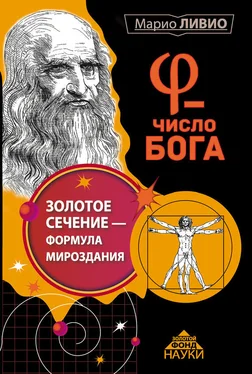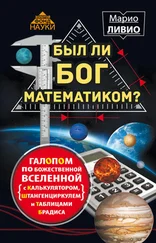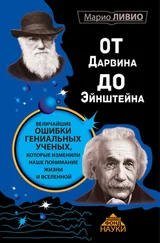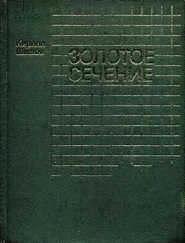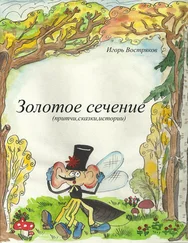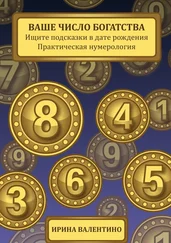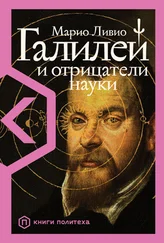Spence, K. “Ancient Egyptian Chronology and the Astronomical Orientation of the Pyramids”, Nature, 408 (2000): 320–324.
Stewart, I. “Counting the Pyramid Builders”, Scientific American (September 1998): 98–100.
Verheyen, H. F. “The Icosahedral Design of the Great Pyramid”, in Fivefold Symmetry.
Singapore: World Scientific, 1992, 333–360.
Wier, S. K. “Insights from Geometry and Physics into the Construction of Egyptian
Old Kingdom Pyramids”, Cambridge Archaeological Journal, 6 (1996): 150–163.
4. Второе сокровище
Borissavlievitch, M. The Golden Number and the Scientific Aesthetics of Architecture. London: Alec Tiranti, 1958.
Bruckman, P. S. “Constantly Mean”, «Fibonacci Quarterly», 15 (1977): 236.
Coxeter, H. S. M. Introduction to Geometry. New York: John Wiley & Sons, 1963.
Cromwell, P. R. Polyhedra. Cambridge: Cambridge University Press, 1997.
Dixon, K. Mathographics. New York: Dover Publications, 1987.
Ghyka, M. L’Esthetique des proportions dans la nature et dans les arts. Paris: Gallimard, 1927.
Heath, T. A History of Greek Mathematics. New York: Dover Publications, 1981.
Heath, T. The Thirteen Books of Euclid’s Elements. New York: Dover Publications, 1956.
Jowett, B. The Dialogues of Plato. Oxford: Oxford University Press, 1953.
Kraut, R. The Cambridge Companion to Plato. Cambridge: Cambridge University Press, 1992.
Lasserre, F. The Birth of Mathematics in the Age of Plato. London: Hutchinson, 1964.
Pappas, T. The Joy of Mathematics. San Carlos, CA: Wide World Publishing, 1989.
Trachtenberg, M., and Hyman, I. Architecture: From Prehistory to Post Modernism/The
Western Tradition. New York: Harry N. Abrams, 1986.
Zeising, A. Der goldener Schnitt. Halle: Druck von E. Blochmann & Son in Dresden, 1884.
5. Сын доброй матери-природы
http://cedar.evansville.edu/~ck6/index.html.
Adler, I., Barabe, D., and Jean, R. V. “A History of the Study of Phyllotaxis”, Annals of Botany, 80 (1997): 231–244.
Basin, S. L. “The Fibonacci Sequence as It Appears in Nature”, Fibonacci Quarterly, 1 (1963): 53–64.
Brousseau, Brother A. An Introduction to Fibonacci Discovery. Aurora, SD: The Fibonacci Association, 1965.
Bruckman, P. S. “Constantly Mean”, Fibonacci Quarterly, 15 (1977): 236.
Coxeter, H. S. M. “The Golden Section, Phyllotaxis, and Wythoff’s Game”, Scripta Mathematica, 19 (1953): 135–143.
Coxeter, H. S. M. Introduction to Geometry. New York: John Wiley & Sons, 1963.
Cook, T. A. The Curves of Life. New York: Dover Publications, 1979.
Devlin, K. Mathematics. New York: Columbia University Press, 1999.
Douady, S., and Couder, Y. “Phyllotaxis as a Physical Self-Organized Process”, Physical
Review Letters, 68 (1992): 2098–2101.
Dunlap, R. A. The Golden Ratio and Fibonacci Numbers. Singapore: World Scientific, 1997.
Fibonacci, L. P. The Book of Squares. Orlando, FL: Academic Press, 1987.
“The Fibonacci Numbers”, Time, April 4, 1969, 49–50.
Gardner, M. Mathematical Circus. New York: Alfred A. Knopf, 1979.
Gardner, M. “The Multiple Fascination of the Fibonacci Sequence”, Scientific American (March 1969): 116–120.
Garland, T. H. Fascinating Fibonaccis. White Plains, NY: Dale Seymour Publications, 1987.
Gies, J., and Gies, F. Leonard of Pisa and the New Mathematics of the Middle Ages. New
York: Thomas Y. Crowell Company, 1969.
Hoggatt, V. E. Jr. “Number Theory: The Fibonacci Sequence”, Chicago: Encyclopaedia
Britannica, Yearbook of Science and the Future, 1977, 178–191.
Hoggatt, V. E. Jr., and Bicknell-Johnson, M. “Reflections Across Two and Three Glass Plates”, Fibonacci Quarterly, 17 (1979): 118–142.
Horadam, A. F. “Eight Hundred Years Young”, The Australian Mathematics Teacher, 31 (1975): 123–134.
Jean, R. V. Mathematical Approach to Pattern and Form in Plant Growth. New York: John Wiley & Sons, 1984.
O’Connor, J. J. and Robertson, E. F. www-history.mcs.st-andrews.ac.uk/history/Mathematicians/Fibonacci.html.
Pickover, C. A. Keys to Infinity. New York: John Wiley & Sons, 1995.
Rivier, N., Occelli, R., Pantaloni, J., and Lissowdki, A. “Structure of Binard Convection”.
Cells, Phyllotaxis and Crystallography in Cylindrical Symmetry”, Journal Physique, 45 (1984): 49–63.
Singh, P. “The So-Called Fibonacci Numbers in Ancient and Medieval India”, Historia Mathematica, 12 (1985): 229–244.
Smith, D. E. History of Mathematics. New York: Dover Publications, 1958.
Stewart, I. “Fibonacci Forgeries”, Scientific American (May 1995): 102–105.
Stewart, I. Life’s Other Secret. New York: John Wiley & Sons, 1998.
Thompson, D. W. On Growth and Form. New York: Dover Publications, 1992.
Vajda, S. Fibonacci & Lucas Numbers, and the Golden Section. Chichester: Ellis Horwood Limited, 1989.
Vorob’ev, N. N. Fibonacci Numbers. New York: Blaisdell, 1961.
6. Божественная пропорция
Arasse, D. Leonardo Da Vinci. New York: Konecky & Konecky, 1998.
Beer, A. and Beer, P., eds., Kepler: Four Hundred Years. Vistas in Astronomy, vol. 18, New York: Pergamon Press, 1975.
Calvesi, M. Piero Della Francesca. New York: Rizzoli, 1998.
Caspar, M. Kepler. New York: Dover Publications, 1993.
Cromwell, P. R. Polyhedra. Cambridge: Cambridge University Press, 1997.
Gingerich, O. “Kepler, Galilei, and the Harmony of the World”, in Music and Science in the Age of Galileo, ed. V. Coeltho, 45–63. Dordrecht: Kluwer, 1992.
Gingerich, O. “Kepler, Johannes”, in Dictionary of Scientific Biography, ed. Charles Coulston Gillespie, vol. 7, 289–312. New York: Scribners, 1973.
Ginzburg, C. The Enigma of Piero. London: Verso, 2000.
James, J. The Music of the Spheres. New York: Copernicus, 1993.
Jardine, N. The Birth of History and Philosophy of Science: Kepler’s “A Defense of Tycho against Ursus” with Essays on Its Provenance and Significance. Cambridge: Cambridge University Press, 1984.
Kepler, J. The Harmony of the World. Philadelphia: American Philosophical Society, 1997.
Kepler, J. Mysterium Cosmographicum. New York: Abaris Books, 1981.
Leonardo Da Vinci. NY: Artabras/Reynal and Company, 1938.
MacKinnon, N. “The Portrait of Fra Luca Pacioli”, Mathematical Gazette, 77 (1993): 130–219.
Martens, R. Kepler’s Philosophy and the New Astronomy. Princeton, NJ: Princeton University Press, 2000.
O’Connor, J. J., and Robertson, E. F. www-history.mcs.st-andrews.ac.uk/history/Mathematicians/Pacioli.html/Durer.html.
Pacioli, L. Divine Proportion. Paris: Librairie du Compagnonnage, 1988.
Pauli, W. “The Influence of Archetypal Ideas on the Scientific Theories of Kepler”, in The Interpretation of Nature and the Psyche, 147–240. New York: Parthenon, 1955.
Stephenson, B. The Music of the Spheres: Kepler’s Harmonic Astronomy. Princeton, NJ: Princeton University Press, 1994.
Strieder, P. Albrecht Dürer. New York: Abaris Books, 1982.
Читать дальше
Конец ознакомительного отрывка
Купить книгу
